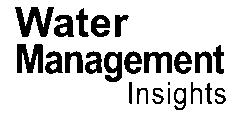The water and wastewater treatment market is surging, with a projected value of USD 652.30 billion by 2034, up from USD 347.90 billion in 2024. This growth, at a compound annual growth rate of 6.50%, is driven by an escalating demand for clean water due to industrialization, urbanization, and population growth. The market’s expansion is further fueled by stringent government regulations and environmental concerns, pushing the adoption of advanced technologies like digitization and smart water management systems.
Asia Pacific dominates the global market, holding a 36.10% share in 2024, with a significant portion of the market driven by the region’s rapid urbanization, industrialization, and population growth. The region’s market is expected to reach USD 282.80 billion by 2034, growing at a CAGR of 8.60%. This growth is underpinned by substantial infrastructure investments, environmental protection initiatives, and a growing awareness of sustainable water management. The region’s industrial sector, which accounts for the highest market share of 66.03%, is a significant driver of this growth. The industrial sector’s demand for water, coupled with the need to comply with strict regulations and improve water quality, is propelling the market forward. The Asia Pacific region’s growth is further bolstered by events like Watertech China 2024, which is set to introduce at least 300 new products and services, attracting 100,000 attendees and over 2,500 exhibitors. This event is expected to transform the sector by showcasing the latest technology advancements in water treatments.
North America, known for its sophisticated infrastructure and stringent environmental laws, is also a significant player in the market. The region’s market growth is driven by the need to update outdated water infrastructure, address water scarcity challenges, and ensure regulatory compliance. The presence of established market players, technological advancements, and substantial R&D investments further bolster North America’s dominance in the market. The region’s wastewater treatment facilities, which include an extensive network of treatment facilities, pumping stations, and collection sewers, are a testament to its commitment to pollution control and public health.
The membrane separation segment, which held a 34.77% market share in 2024, is a key driver of market growth. This technology, which can efficiently capture pollutants, microorganisms, and harmful microbes, offers high quality, stability, and safety. Its advantages over traditional water treatment methods have led experts to dub its advancement as “the third industrial revolution.” The tertiary segment, which contributed the biggest market share of 43.73% in 2024, is also a significant driver of market growth. This segment’s growth is driven by the need for advanced treatment processes to remove contaminants and improve water quality.
The market’s growth is further propelled by opportunities such as the European Bank for Reconstruction and Development’s (EBRD) sovereign loan of up to €25 million to Kosovo’s Ministry of Finance, Labor, and Transfers. This loan aims to improve sewage treatment through the construction of two wastewater treatment plants and network expansion. Additionally, the Global Green Growth Institute (GGGI) and the Department of Planning (DoP) of the Ministry of Planning and Investment (MPI) of Lao PDR have started a project called “Scaling Out Sustainable Solid Waste and Wastewater Management to Improve Public Health and Environment in Lao PDR.” This project, funded by the Korea International Cooperation Agency (KOICA), has a total budget of US$10.5 million. These opportunities, coupled with the market’s growth drivers, are expected to shape the sector’s development significantly. The market’s growth is also expected to be influenced by the rise in agriculture, which requires a large portion of water. With the rise in technologies like hydroponics and vertical farming, the consumption of water has increased even further, driving the market’s growth.
The water and wastewater treatment market’s growth is a testament to the sector’s resilience and adaptability. The market’s expansion, driven by technological advancements, stringent regulations, and growing environmental concerns, is expected to shape the sector’s development significantly. The market’s growth is also expected to influence the development of sustainable water management practices, which are crucial for addressing water scarcity challenges and ensuring public health. The market’s growth is a clear indication of the sector’s potential and the need for continued investment in water and wastewater treatment technologies. The market’s growth is also expected to influence the development of sustainable water management practices, which are crucial for addressing water scarcity challenges and ensuring public health. The market’s growth is a clear indication of the sector’s potential and the need for continued investment in water and wastewater treatment technologies.
